“High key” and “low key” are creative styles that photographers use to help convey a specific mood or emotion in their images. Search for images of any popular photography genre – portrait, product, street, even nature and wildlife, and you’ll find a plethora of high key and low key images. The good news is that we can use high key and low key styles for toy photography too. We’ll look at creating low key toy photographs in another post. For now, let’s explore high key toy photography more closely.
What does “high key” photography mean?
All photographs contain a range of tonal values, anywhere between pure black and pure white. Technically speaking, when most of the tonal values are in the brightest part of the tonal range, the photo is considered “high key”. You can view the tonal range of your photos by looking at the histogram in-camera or in Lightroom (and other programs as well). The left side edge of the histogram represents pure black, the right side edge represents pure white, and the middle point represents 50% gray. There’s more to the histogram than that, but for our purpose here, let’s just keep it simple. Here are two sample photos and their histograms.
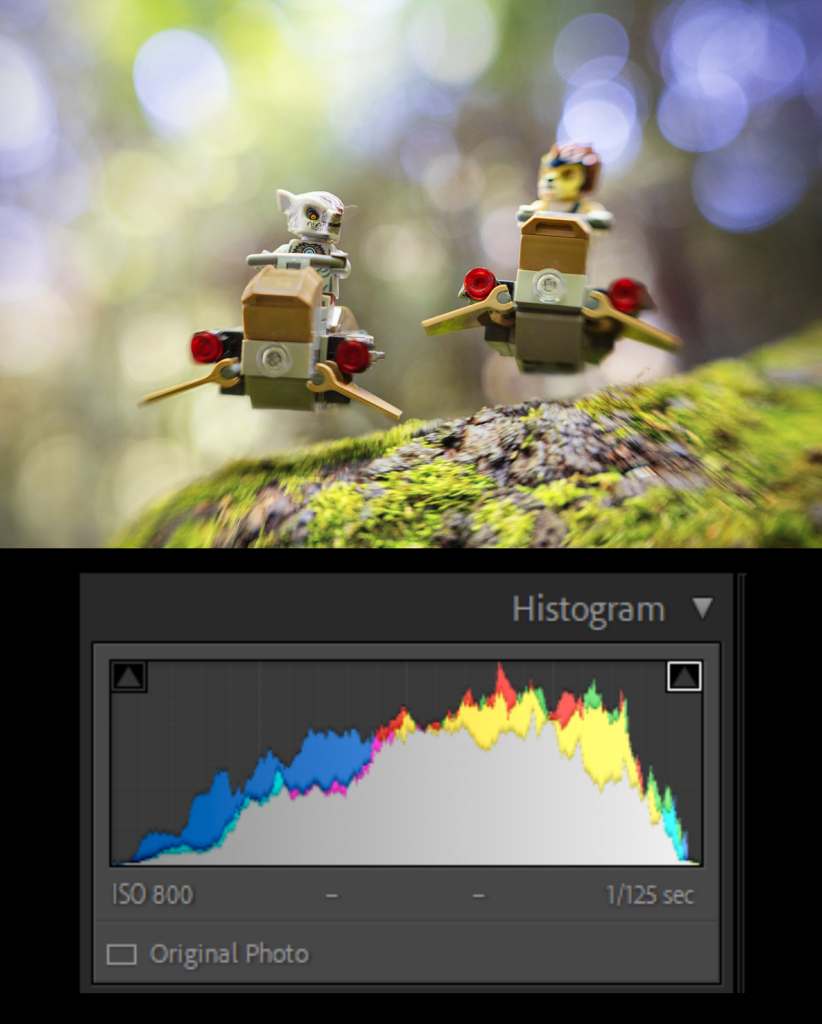
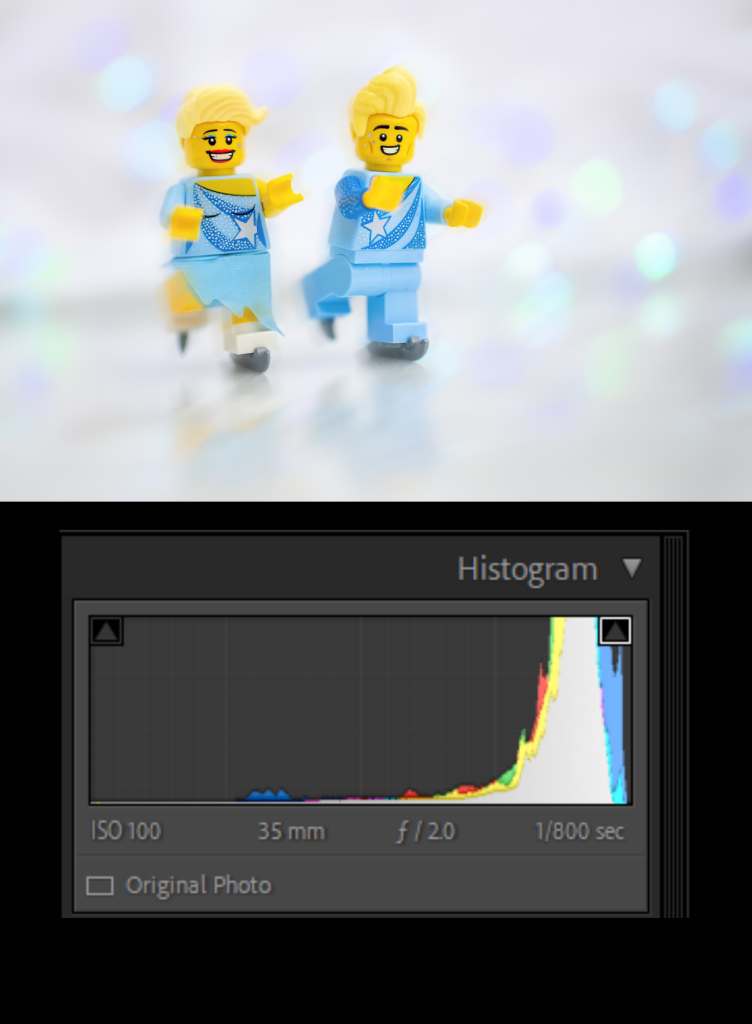
Tonal range is not the only criteria that defines an image as high key. In addition to having mostly bright tonal values, high key images usually have very little shadow detail and low contrast. Successful high key images typically also include other intentional choices that help convey the emotion or story. High key images can be black and white or color. Color images often use a simple palette of soft shades. They can be minimalist in their composition and incorporate a lot of negative space. Toy choice, posing, and atmospheric effects can also help make a high key image more interesting and believable.
Creating a mood
Photographers often use high key techniques to create a specific mood, such as:
- airy, dreamy, peaceful, or ethereal,
- light-hearted or cheerful, or
- the harshness or emptiness of a location
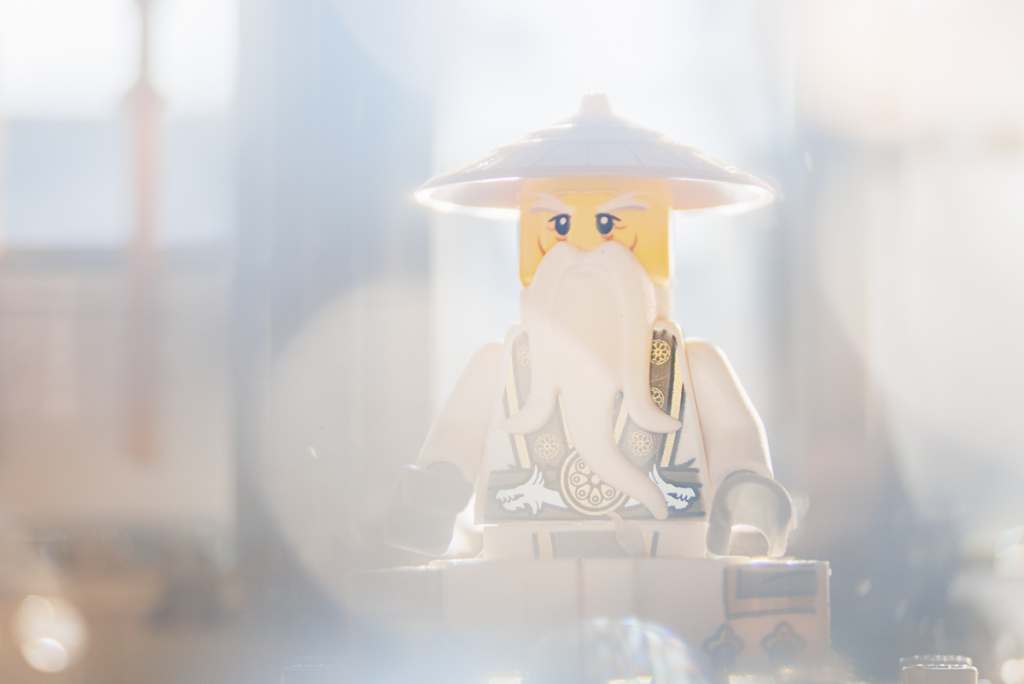
High key setups are often used for product photography to make the subject stand out and create an upbeat, feel-good vibe. We can do the same thing with toys.
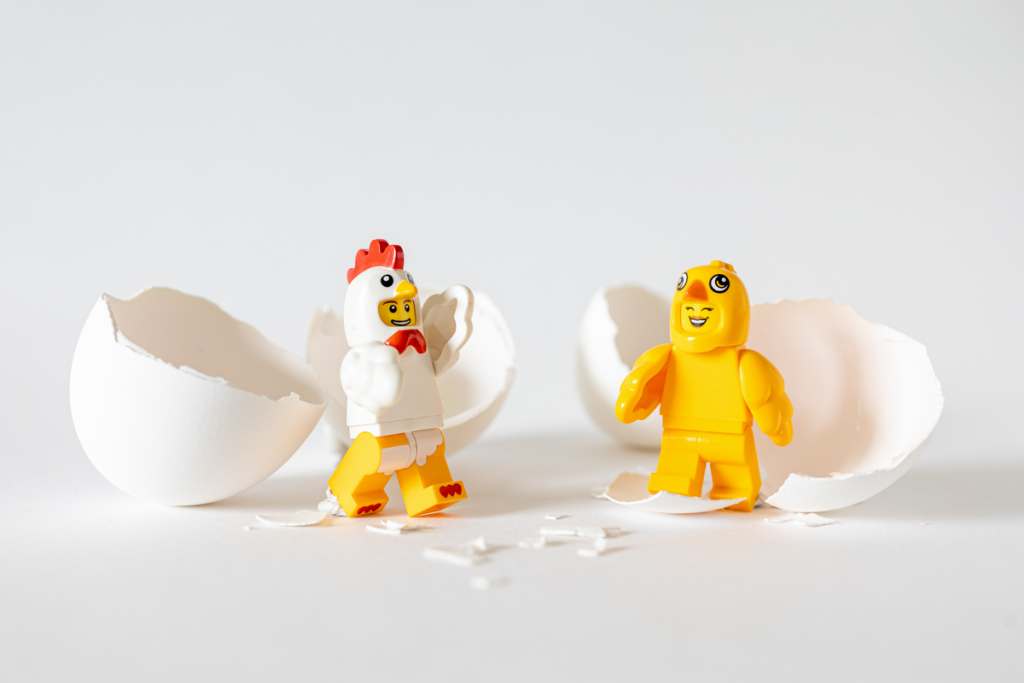
Toy and scene selection for high key images
To create high key images, it is easiest to use toys that are predominantly white or light-colored (don’t worry, Darth Vader will get his chance next time). Think about the story and the scene as well. And don’t limit yourself to plain white backgrounds. Snow, fog, clouds, or sand scene setups are great for high key photos.
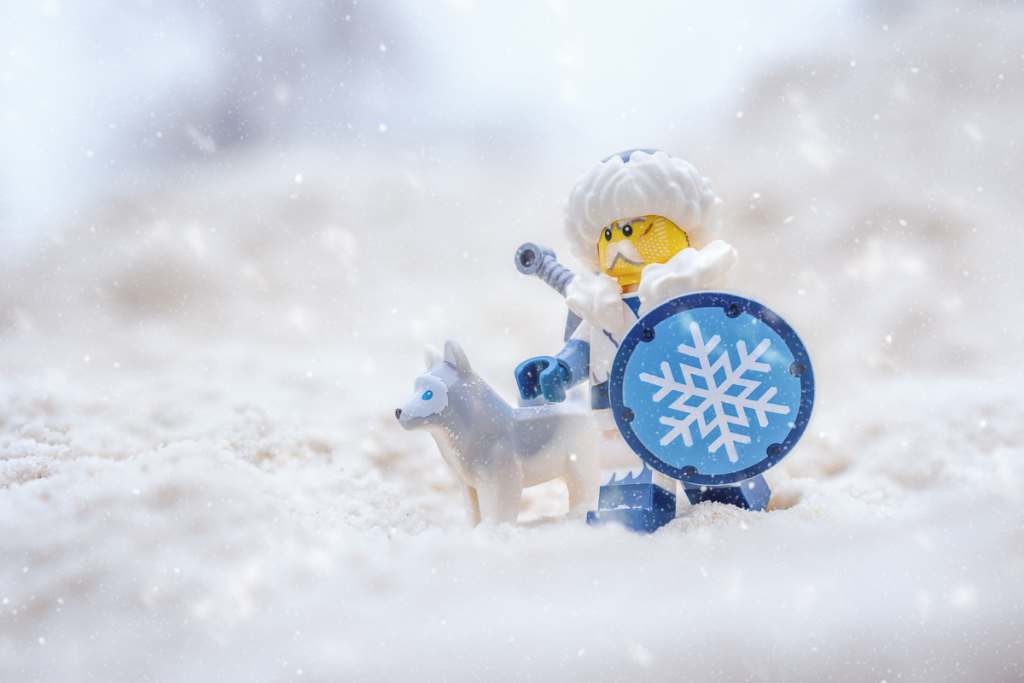
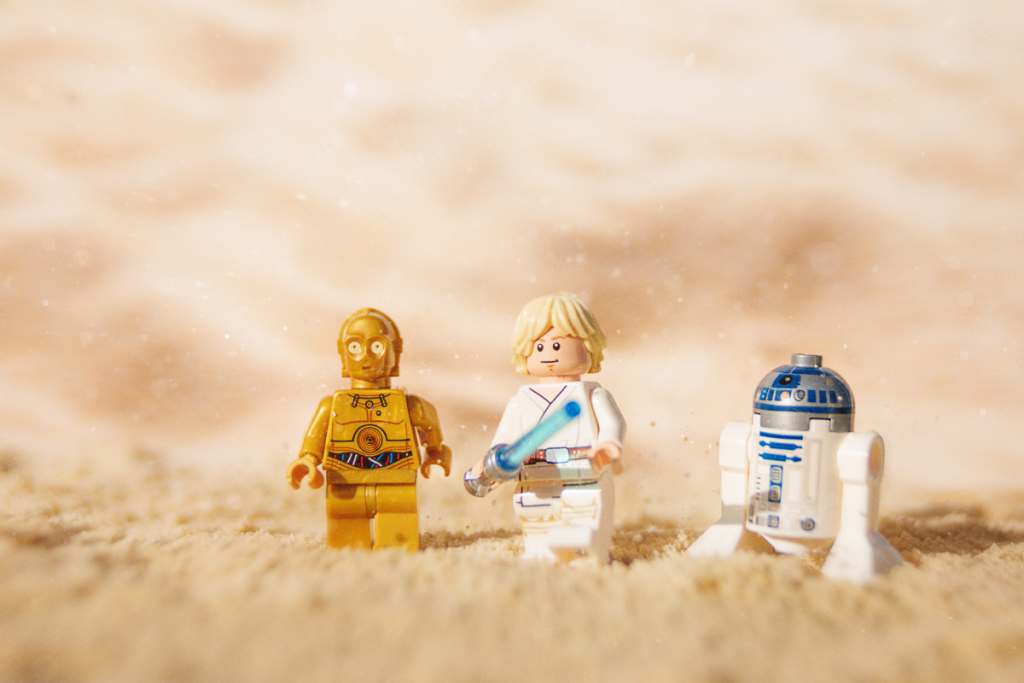
Creating a high key toy photo indoors
You can create high key toy photos indoors using window light or artificial lights. Window light creates a large light source which provides even light and soft shadows. Position your setup with the window on one side or behind your toys and a reflector on the opposite side to fill in the shadows.
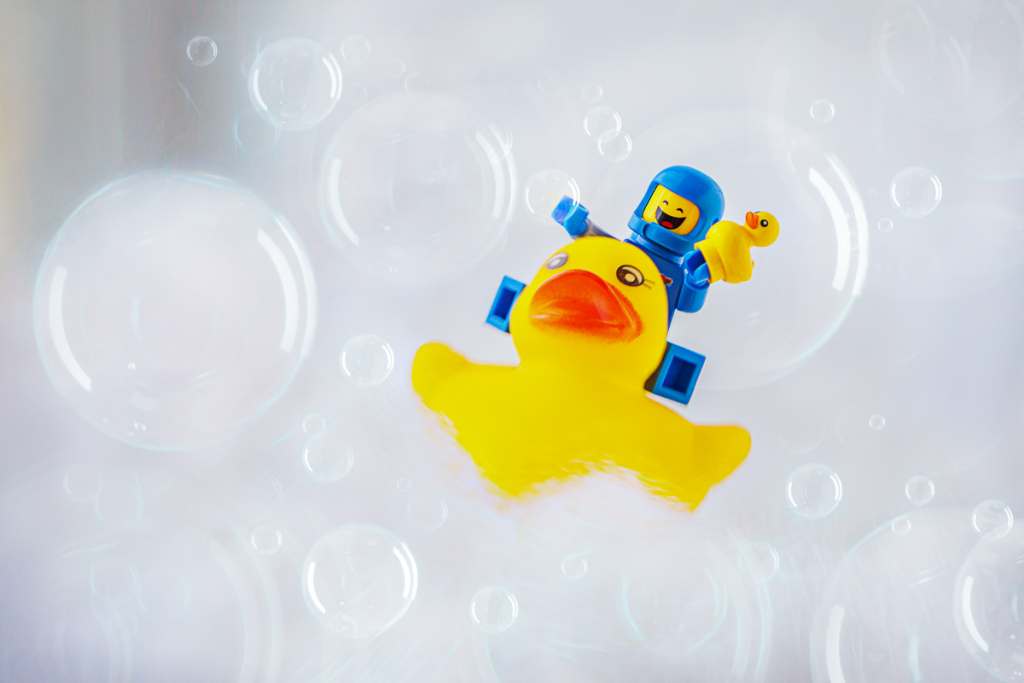
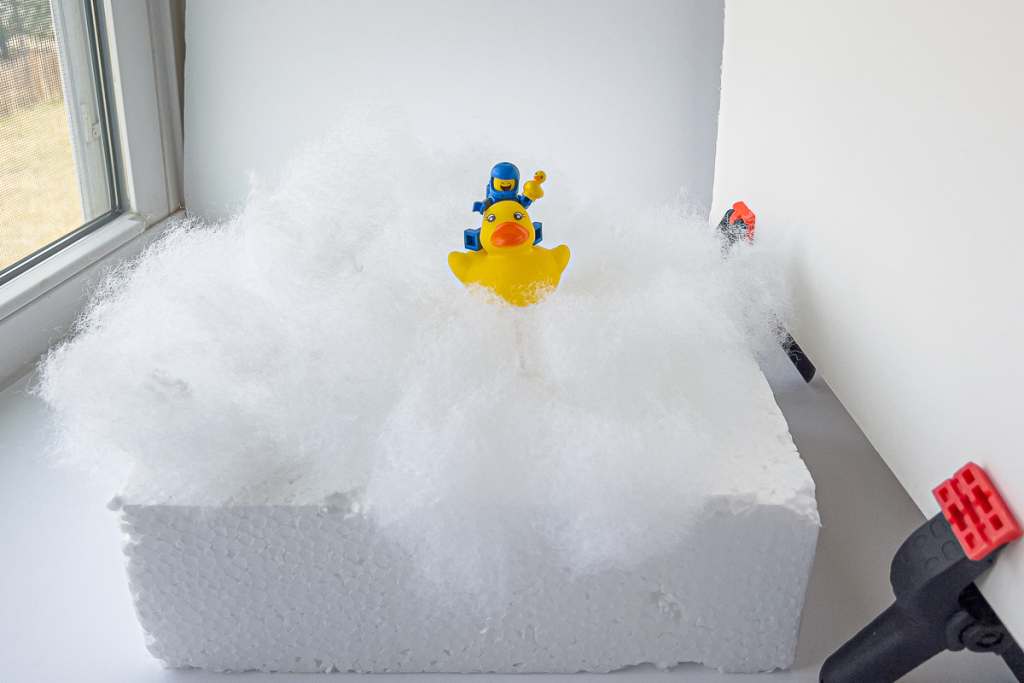
You can also use multi-light setups and white backdrops and surfaces; there are plenty of tutorials available for this online. Obviously, for toys everything will be scaled down in size. But the concept is the same – position the lights (and/or reflectors) to get bright, even light on the subject, fill in shadows, and (if needed) brighten the background. Camera exposure is a personal choice. Some photographers like to overexpose to the point of losing all details in the brightest parts of the image (aka “blowing out the highlights”). I usually try to get the exposure as bright as possible without triggering the camera’s highlights warning (“blinkies”). Blown-out areas may be acceptable if your photo will only live online, but can be quite unpleasant in printed images.
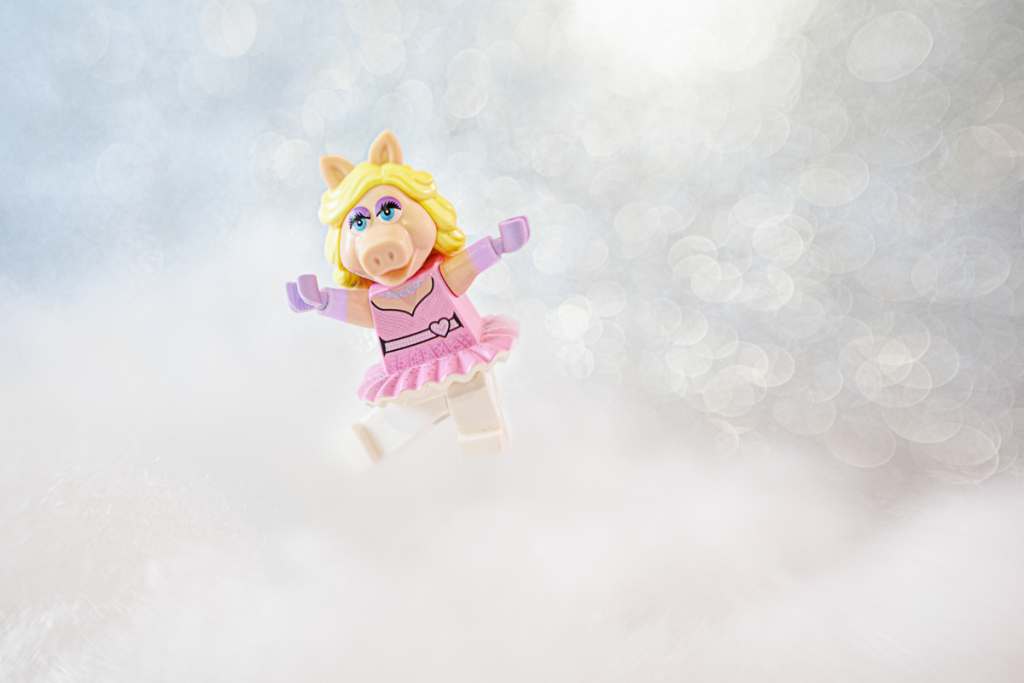
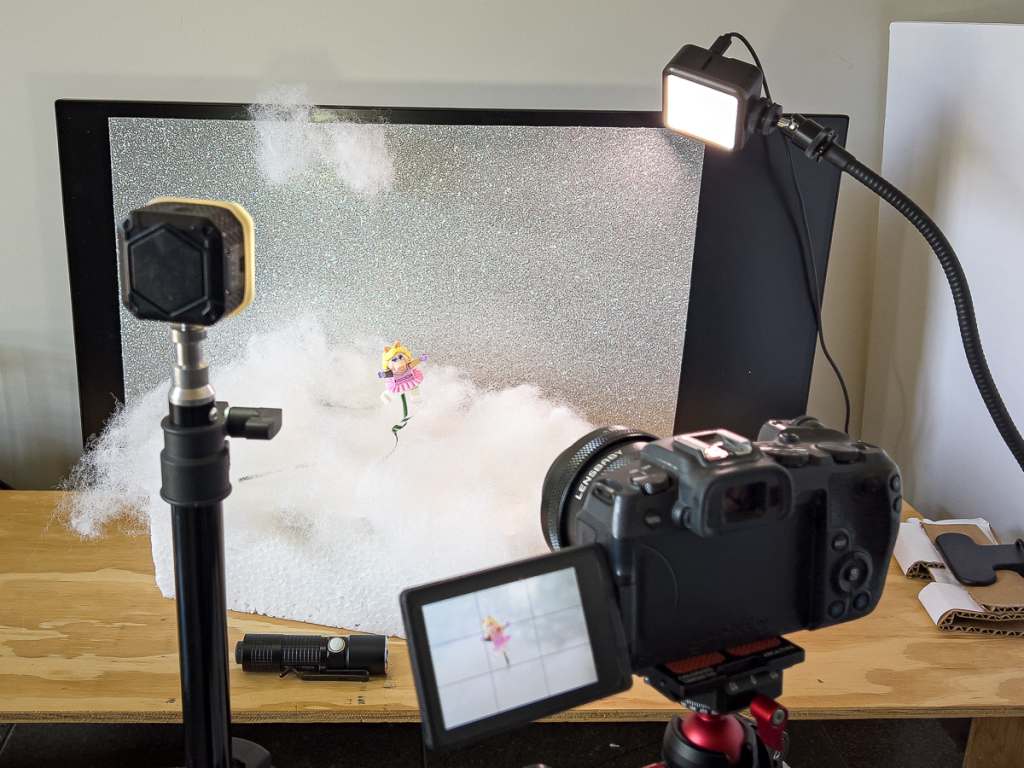
Can you create a high key toy photo outdoors?
Yes! Overcast (or even better, misty or foggy) days work well because it’s easier to get soft, even lighting than a bright sunny day. Golden hour (the hour after sunrise or before sunset) works too because the sun is at a lower angle. Choose a light-colored or white background. Avoid backgrounds with distracting elements that force the viewer’s eye away from the subject. On sunny days, use backlighting, overexpose the background, and use a reflector or small hand-held light to fill in the light and shadows on the subject. When creating high key photos outdoors, you may need to overexpose a full stop or more to create the look you want.
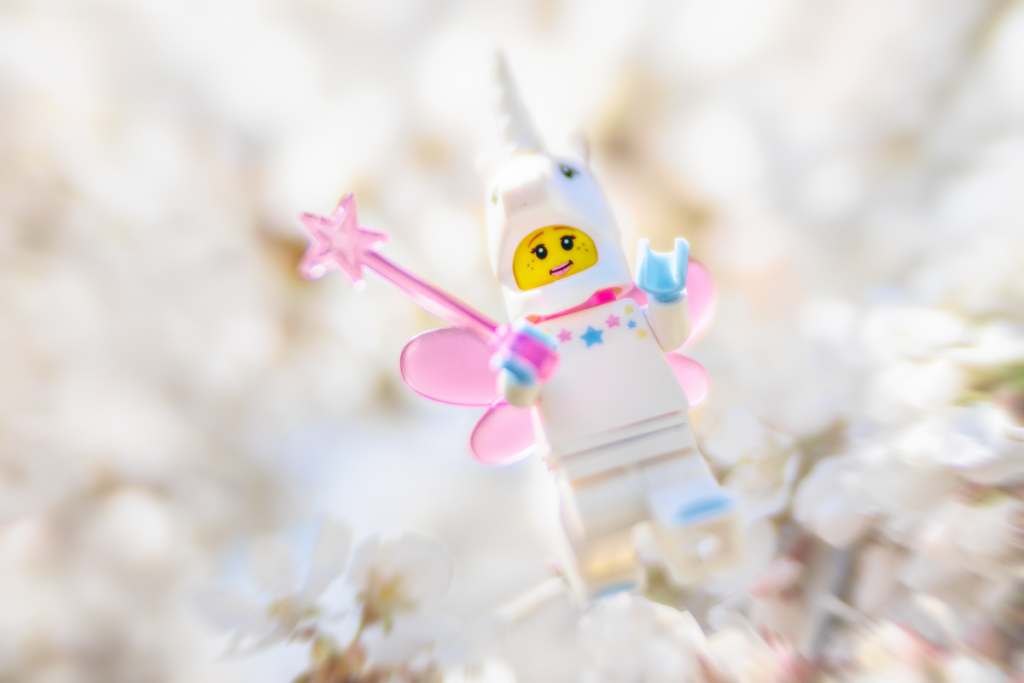
Post-processing to enhance the high key effect
Even perfectly lit images can typically benefit from some post-processing to fine tune the high key look. Try lowering the contrast, blacks, and shadows, and increasing the whites, highlights, and overall exposure. Also, desaturating the colors and lowering the clarity or dehaze can add “lightness” to an image. Use small adjustments and avoid making the photo look too washed-out. Experiment with monotone (single color) or black and white conversions too.
Wrap-up
My goal here was to give you some basic information to help you create high key setups for your toy photography. But it’s really the tip of the iceberg. Take a look around the toy community and you’ll see some really great examples of the high key style in action – here are a few of my favorites:
- Secrets (@kalexanderson)
- Ahsoka Tano (@weelegoman)
- Captain America (@thebrickphoto)
Like everything else in toy photography (well, ok, all photography!), high key images may not appeal to everyone. But it can be a great addition to our creative toolbox. Have fun with it! And stay tuned – in my next post we’ll check out the dark, moody, dramatic vibes you can create with low key style toy photography setups.


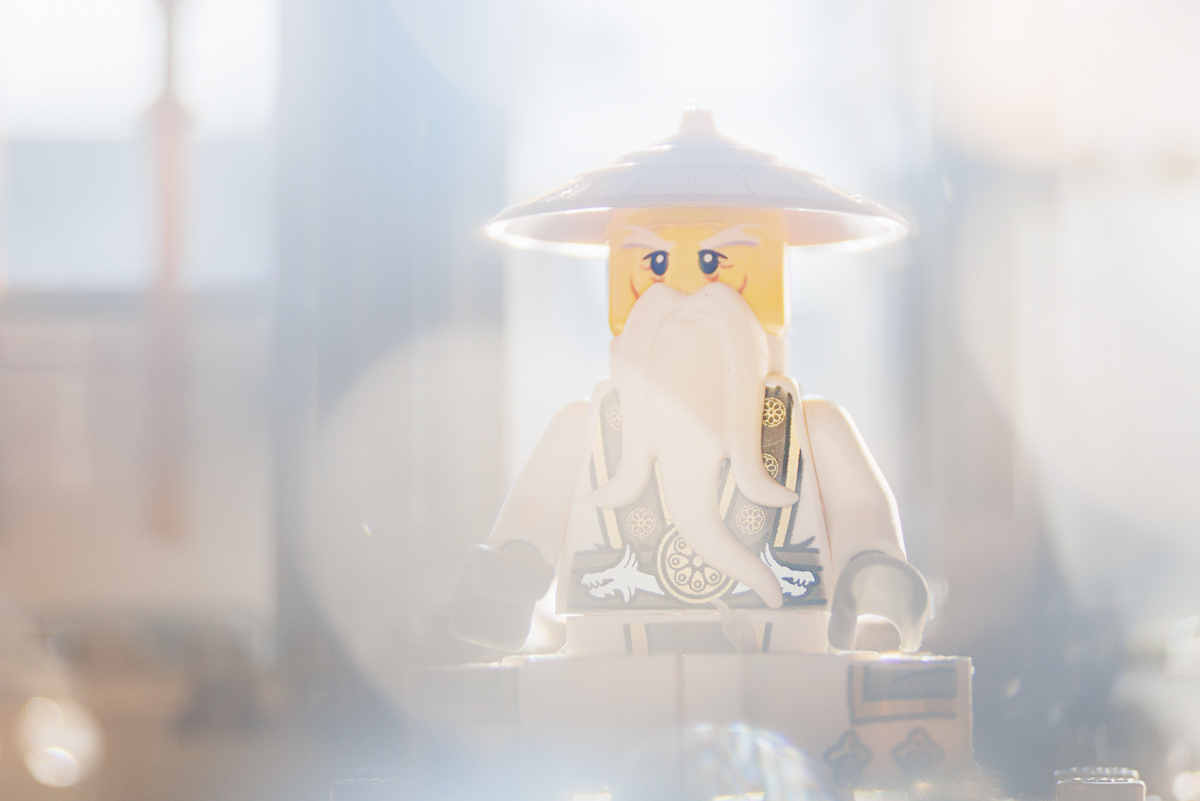



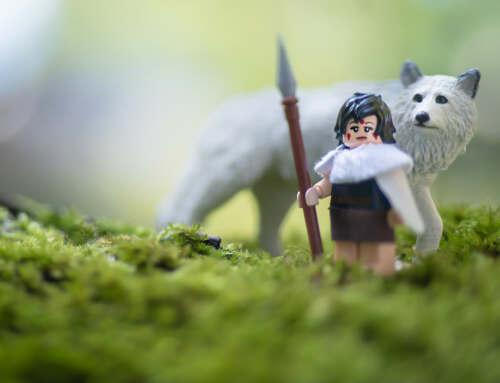
Always enjoy seeing the “behind the scenes” examples like this. Makes me want to give this a try!
Thanks! I know a lot of the blog readers are truly wizards with lighting, but I am not, LOL. I tried to keep the setups simple so that everyone could play :).
Really a fan of high key images- the hope and wonder they evoke. Wonderful article about explaining the theory behind them and tips on how to create them.
Thank you Jane!
Excellent article, Chellie – I love high key when it’s done well!